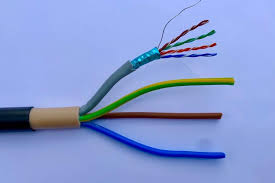In the evolving world of high-speed networking, CAT6 cablesplay a pivotal role by providing enhanced performance and reliability. In addition to CAT5e cables, CAT6 cables are made to meet the demands of modern network infrastructures where increased bandwidth and faster speeds are crucial. Let’s see the way CAT6 cables contribute to high-speed networking.
Increased Bandwidth: One of the main advantages of CAT6 cables is their ability to support greater bandwidths. In contrast to CAT5e, which usually can handle up 100MHz CAT6 cables are designed to function at frequencies of up between 250 and 300 MHz. This increases the bandwidth capacity, allowing CAT6 cables to process more data simultaneously, making them suitable for applications that require high data throughput, such as streaming video or online gaming. They also support large file transfers.
Faster Data Transfer Rates: CAT6 cables support data transfer speeds up to 10 Gbps across shorter distances, usually between 55 and 55 meters (180 feet). This is a major improvement over CAT5e which is capable of 1 Gbps. The higher speeds of data offered by CAT6 cables ensure smoother performance in network environments that are extremely demanding and are vital for high-speed internet connections as well as efficient data handling.
Reduction of Crosstalk and Interference: CAT6 cables feature improved shielding and tighter twists in the inner wire pairs compared to CAT5e. This configuration reduces crosstalk which is caused by adjacent cables and also reduces external noise that can affect signal quality. The result is a more reliable and consistent quality of network, and fewer interruptions and less signal degradation.
Improved performance for Gigabit Networks: CAT6 cables are especially beneficial in situations that use Gigabit Ethernet is utilized. They provide the necessary performance to fully utilize the capabilities of Gigabit networks, assuring that data can be transmitted in a speedy manner and without bottlenecks.
In summary, CAT6 cables are instrumental in high-speed networking, offering increased bandwidth, faster speeds for data transfer as well as less interference. Their improved performance makes them a valuable investment for both current and future needs in networking, supporting a range of high-demand applications and ensuring the reliability and efficiency of your network infrastructure.



